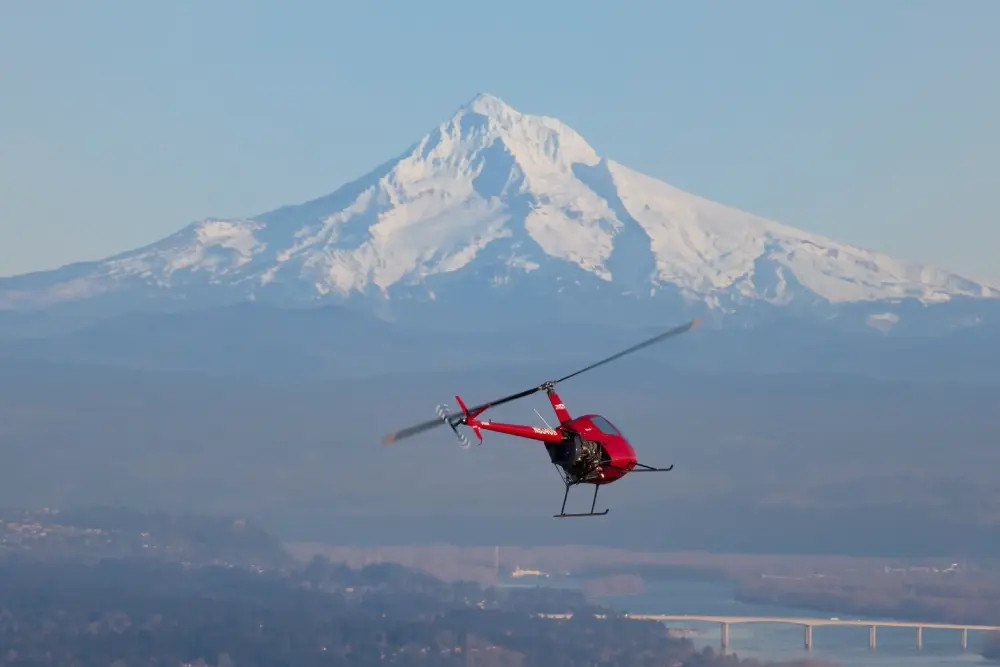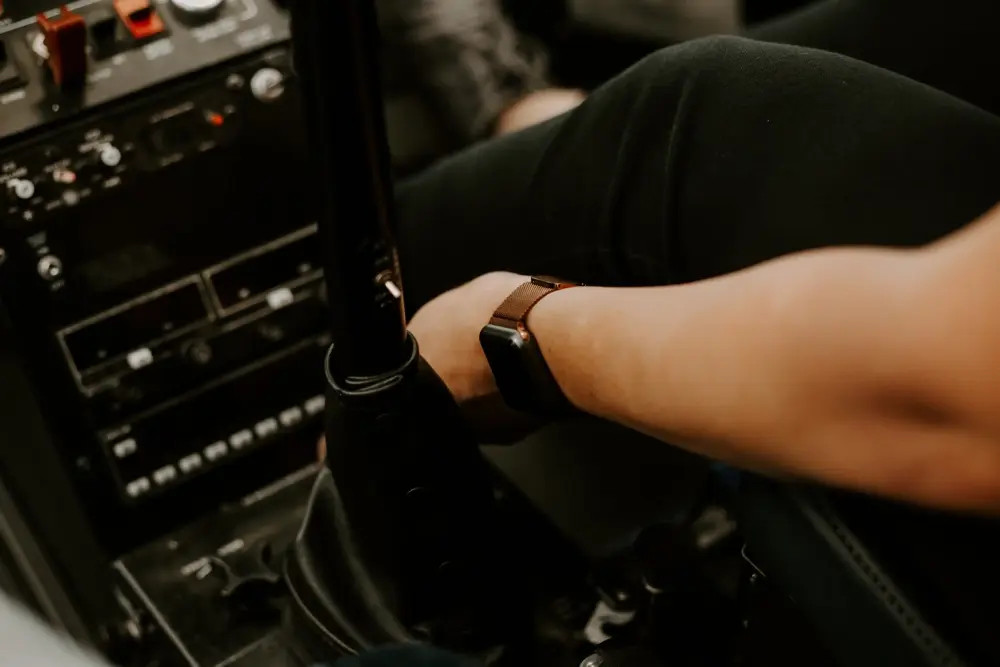How Far Can A Helicopter Fly Before Refueling? A helicopter’s flight range depends on several factors, but generally, you can expect a range between 200 and 450 miles, which flyermedia.net can help you understand, depending on the model and conditions. This information is crucial for pilots, operators, and anyone fascinated by these versatile aircraft. Let’s explore the factors influencing helicopter range, and discover how technological advancements are pushing the boundaries of what’s possible in rotary-wing aviation. Understanding these aspects can significantly enhance your knowledge of aviation and help you make informed decisions, whether you’re a pilot or an enthusiast.
1. Decoding Helicopter Range
Understanding helicopter range is essential for pilots and operators. Several factors, including fuel capacity, payload weight, and weather conditions, influence how far a helicopter can fly. These elements must be considered for safe and efficient flight planning.
1.1. Typical Flight Ranges of Helicopters
Helicopter flight range is essential when planning any mission. Piston-engine helicopters generally have a range of 200-350 miles. Turbine-powered helicopters, known for their greater efficiency, can extend that range to approximately 300-450 miles.
 Bell 206 Jet Ranger
Bell 206 Jet Ranger
This difference in range makes turbine helicopters more suitable for longer missions, while piston helicopters are often used for shorter, more localized operations. Understanding these ranges is crucial for mission planning and ensuring the right helicopter is selected for the job.
1.2. Popular Helicopter Models and Their Ranges
Different helicopter models offer varying flight ranges due to design, engine type, and fuel capacity. Here’s a look at some popular models and their approximate ranges:
| Helicopter Model | Approximate Range (miles) |
|---|---|
| Bell UH-1 Iroquois | 300-315 |
| Mil Mi-8 | 280-310 |
| Boeing CH-47 Chinook | 400-450 |
| Airbus H125 | 340-345 |
| Sikorsky UH-60 Blackhawk | 360-370 |
| Robinson R44 | 350-400 |
These figures are approximate and can vary based on payload, weather, and specific flight plans. Factors such as wind speed, altitude, and temperature can also impact the actual range achieved during a flight.
1.3. Key Factors Affecting Helicopter Range
The range of a helicopter is influenced by several critical factors. Understanding these elements can help pilots and operators maximize their flight distance and ensure safety.
-
Fuel Capacity: The amount of fuel a helicopter can carry directly determines how far it can fly. Larger fuel tanks enable longer distances.
-
Payload: The weight of cargo, passengers, and additional equipment affects range. Heavier payloads reduce the distance a helicopter can travel.
-
Weather: Adverse weather, such as strong winds or heavy rain, increases drag and reduces fuel efficiency, decreasing range.
-
Altitude: Higher altitudes mean thinner air, decreasing lift and fuel efficiency.
-
Flight Speed: Flying at higher speeds consumes more fuel, which reduces the overall range.
-
Fuel Efficiency: Helicopters with better fuel efficiency can travel farther on the same amount of fuel.
Considering these factors is essential for accurate flight planning. You can optimize performance and safely reach your destination by carefully assessing these elements.
2. Diverse Applications of Helicopter Range
Helicopters are versatile aircraft with applications spanning search and rescue, medical services, military operations, and commercial transportation. Their ability to operate in diverse environments makes them invaluable in many scenarios.
2.1. Helicopters in Search and Rescue Operations
Search and rescue operations rely heavily on helicopters due to their maneuverability and ability to reach remote locations quickly. These missions include finding missing persons, responding to natural disasters, and providing medical assistance.
The United States Coast Guard, for example, uses the Sikorsky S-76 helicopter for search and rescue. With night vision and a range of up to 400 miles, it can cover vast areas efficiently. According to the USCG, the S-76 is equipped with advanced radar systems and thermal imaging, enhancing its ability to locate individuals in distress, even under adverse conditions. These capabilities make helicopters indispensable in time-sensitive rescue missions.
2.2. Emergency Medical Services (EMS) Utilizing Helicopters
Helicopters are essential in Emergency Medical Services (EMS) for transporting patients rapidly, especially in remote areas. Speed is crucial in emergencies, and helicopters offer faster response times than ground transportation.
Helicopters can land in small spaces, such as hospital helipads or open fields, making them highly adaptable. Models like the Sikorsky S-76 and Eurocopter EC135 are often equipped with medical equipment for air medical services. These helicopters ensure patients receive timely medical attention.
2.3. Military Operations and Helicopter Range
Helicopters have been integral to military missions for decades, transporting troops and supplies, conducting surveillance, and executing air assaults.
The UH-60 Black Hawk, used by the United States Army, has a range of about 400 miles and can carry up to 11 soldiers or crew members plus equipment. The AH-64 Apache attack helicopter, with a top speed of 185 mph, carries various weapons, including missiles and guns. These helicopters offer unmatched versatility and accessibility in military operations.
2.4. Commercial Transportation with Helicopters
Since the 1950s, helicopters have been used for commercial transportation, particularly to reach remote locations inaccessible by other means.
Helicopter charter companies provide private flights for business or leisure, allowing passengers to avoid traffic and quickly reach destinations. Helicopters are also used for tourism, offering aerial views of landmarks and attractions.
Civilian helicopters typically have a range of 200-400 miles, requiring refueling stops for longer trips. The flexibility and speed of helicopter transport make it a valuable option for various commercial needs.
3. Long-Distance Helicopter Flights: Advancements and Innovations
Record-setting flights and technological innovations are continuously pushing the limits of helicopter range. Advancements in fuel efficiency and engine power are paving the way for even greater possibilities in long-distance helicopter travel.
3.1. Noteworthy Record-Setting Helicopter Flights
Helicopters have achieved remarkable feats in long-distance flight, setting numerous records. Here are some notable examples:
-
In 2004, the AgustaWestland AW139 set a world record for the longest distance flown by a helicopter without landing, covering 1,448 nautical miles.
-
Pilots Jennifer Murray and Colin Bodill circumnavigated the globe in a Robinson R66 helicopter in 2013, covering over 36,000 miles.
-
In 2016, an Airbus Helicopters H225 flew non-stop from Marignane, France, to Aberdeen, Scotland, covering over 1000 km.
-
The Sikorsky-Boeing SB>1 Defiant compound helicopter reached nearly 300 mph during testing in 2019, setting a speed record.
-
In July 2021, a French pilot set a new world record for electric-powered helicopters by flying a Volta eVTOL for over seven minutes, covering approximately two miles.
These achievements highlight the impressive capabilities of modern helicopters and inspire further advancements in long-distance flight.
3.2. Innovations Driving Increased Helicopter Range
Technological advancements have significantly increased helicopter range. The Sikorsky CH-53K King Stallion, a heavy-lift helicopter with a range of up to 460 nautical miles (530 miles), uses advanced materials and systems to improve fuel efficiency and reduce maintenance.
GPS systems enable accurate navigation over long distances, minimizing fuel consumption with efficient flight paths. Satellite communication systems provide real-time weather updates and allow pilots to communicate with air traffic controllers globally. These innovations enhance the safety and efficiency of long-distance helicopter flights.
 Sikorsky CH-53K King Stallion
Sikorsky CH-53K King Stallion
According to Sikorsky, the CH-53K’s advanced avionics and digital flight controls reduce pilot workload, improving overall mission effectiveness. These features contribute to its enhanced range and operational capabilities.
3.3. The Promising Future of Helicopter Flight Range
Exciting developments are on the horizon for long-distance helicopter flights. Ongoing technological advancements and improvements in fuel efficiency are enabling helicopters to fly longer distances.
Electric-powered helicopters are also being developed. Manufacturers are working on electric motors capable of powering larger helicopters for long-distance flights.
While still in development, these innovations offer a promising glimpse into the future of helicopter flight range and capabilities. The potential for reduced emissions and operating costs makes electric helicopters a particularly attractive area of research and development.
4. FAQs: Understanding Helicopter Range
4.1. What Factors Determine the Distance a Helicopter Can Travel?
Several factors influence a helicopter’s flight range, including altitude, temperature, cargo weight, and fuel load. The aircraft’s design and maintenance condition also play a significant role. For instance, higher temperatures can decrease engine performance, while increased altitude affects air density, impacting lift and fuel efficiency.
4.2. How Is the Maximum Range of a Helicopter Calculated?
The maximum flight range of a helicopter is calculated by considering fuel capacity, speed, and altitude, which affect air density. Complex computer models that account for multiple variables are typically used to determine this range. These models also consider wind speed and direction, which can significantly impact fuel consumption and overall range.
4.3. Is It Possible for Helicopters to Fly Long Distances Over Oceans?
Helicopters can fly long distances over water, but their smaller fuel tanks make crossing entire oceans impractical without refueling. Installing additional fuel tanks can extend flight time. According to the FAA, pilots must also consider the availability of emergency landing sites when planning overwater flights.
4.4. Are There Helicopter Models Known for Exceptional Range?
Yes, military helicopters often have longer ranges due to specialized equipment like auxiliary fuel tanks. These tanks allow them to fly further with greater efficiency, maintaining high levels of payload capability and combat readiness in remote locations. The Boeing CH-47 Chinook is a prime example, known for its long-range capabilities and use in various military operations.
4.5. How Does Payload Weight Affect a Helicopter’s Flight Range?
Payload weight has a direct impact on a helicopter’s flight range. As the weight of cargo, passengers, and equipment increases, the distance a helicopter can travel decreases. This is because the engine must work harder to lift the additional weight, consuming more fuel in the process.
4.6. What Role Does Weather Play in Determining Helicopter Range?
Weather conditions significantly influence a helicopter’s flight range. Strong winds and heavy rain increase drag, reducing fuel efficiency and overall range. Pilots must factor in weather forecasts when planning flights to ensure they have enough fuel to reach their destination safely.
4.7. Can Altitude Affect the Distance a Helicopter Can Fly?
Yes, altitude affects a helicopter’s flight range. As altitude increases, air density decreases, reducing lift and fuel efficiency. Helicopters flying at higher altitudes require more power to maintain flight, which results in increased fuel consumption and decreased range.
4.8. What Are Some Technological Advancements That Have Increased Helicopter Range?
Several technological advancements have increased helicopter range, including improved engine designs, the use of lightweight materials, and advanced navigation systems. These innovations enhance fuel efficiency and enable helicopters to fly farther on a single tank of fuel.
4.9. Are Electric Helicopters a Viable Option for Long-Distance Flight?
Electric helicopters are an area of ongoing development, but they are not yet a viable option for long-distance flight due to limitations in battery technology. However, as battery technology improves, electric helicopters may become a more feasible option for shorter flights and urban air mobility.
4.10. How Can Pilots Maximize the Range of Their Helicopters?
Pilots can maximize the range of their helicopters by carefully planning their flights, flying at optimal altitudes and speeds, minimizing payload weight, and ensuring their aircraft are well-maintained. Regular maintenance and adherence to manufacturer guidelines can also help maintain optimal fuel efficiency.
For those interested in pursuing a career in helicopter aviation or seeking more information, flyermedia.net is your go-to resource. Explore our website for comprehensive details on flight training, aviation news, and career opportunities.
Ready to take the next step? Contact us through flyermedia.net to learn more about helicopter aviation and how you can turn your passion into a career. Discover the world of aviation with flyermedia.net today Address: 600 S Clyde Morris Blvd, Daytona Beach, FL 32114, United States. Phone: +1 (386) 226-6000.